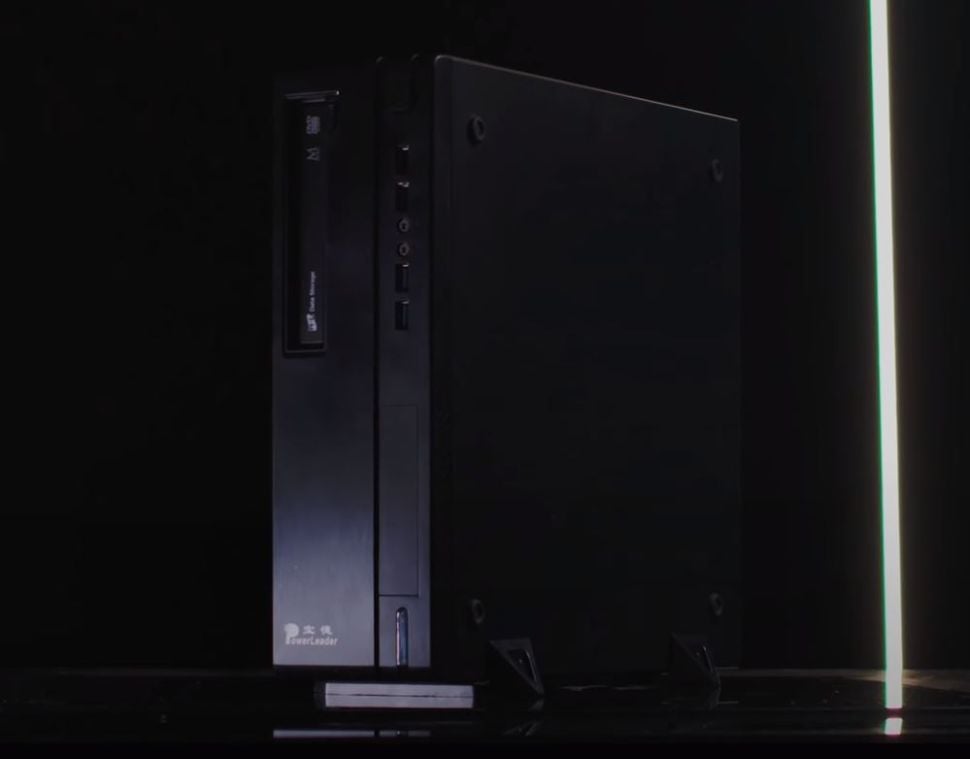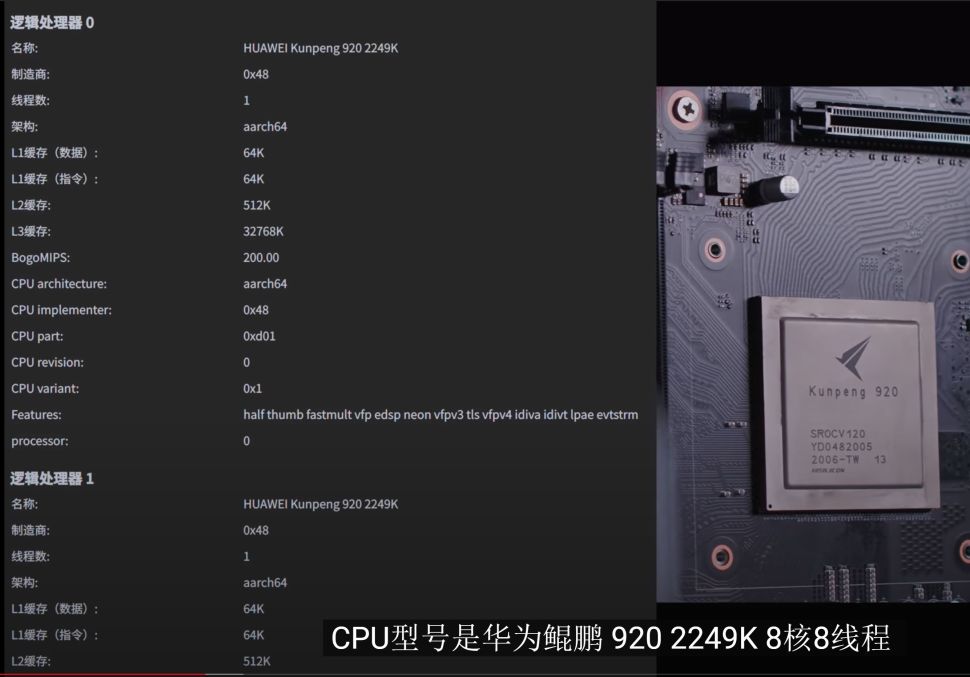Huawei has made its own line of 7nm ARM v8 based Kunpeng processors through its subsidiary, HiSilcon, that features up to 64 cores and is basically meant for servers. Now, it seems that at least one of these chips is planned for a consumer grade desktop system, as a Chinese YouTube channel has recently purchased and reviewed a Huawei Desktop PC. We had previously reported on such a system before and it seems a unit has surfaced online.
The YouTube channel goes by the name of 二斤自制, who apparently bought and reviewed the Huawei PC with the 7nm Kunpeng 920 ARM v8 processor that has eight cores. This system was built with the Huawei D920S10 desktop motherboard in a third party system and offers us a first look at the upcoming desktop lineup the Chinese tech giant will soon offer, marking its entry into the desktop PC market.

Furthermore, the use of self developed chips in the PC is also indicative of reducing reliance on Western technology. Although, it seems that there are still glaring issues with the desktop PC. Looking at the video, it seems the Huawei system is only limited to 64-bit UOS operating system that was made in China. It is a modified version of Linux, with the system supporting 4K resolution at a 60Hz refresh rate via a Yeston RX550 graphics card.
Editor’s Pick: TSMC dominates Samsung in Q2 chip production market as 5G demand rises
Notably, the YouTuber had to pay an extra 800 Yuan (roughly 115 US Dollars) to gain access to the app store. Unfortunately, it seems like the app store is lacking many basic applications, such as Adobe, which can be essential in the professional fields. The system was also benchmarked with the Blender BMW test render that was completed in 11 minutes and 47 seconds, which is quite slow when compared to the recent generation of desktop processors.

The YouTuber bought the system for 7,500 Yuan (roughly 1,060 US Dollars). The Huawei D920S10 motherboard featured 4x DIMM slots but with only 16GB DDR4-2666 RAM spread across two DIMMs. The eight core processor has 8 threads and the video lists its L1 memory with 128K, 512K of L2, and 32MB of L3 memory. While the chip supported PCIe 4.0, the motherboard only has three PCIe 3.0 slots available, with basic connectivity options and ports.
UP NEXT: LG to raise Indian smartphone production by 15X by Diwali, applies for PLI scheme







